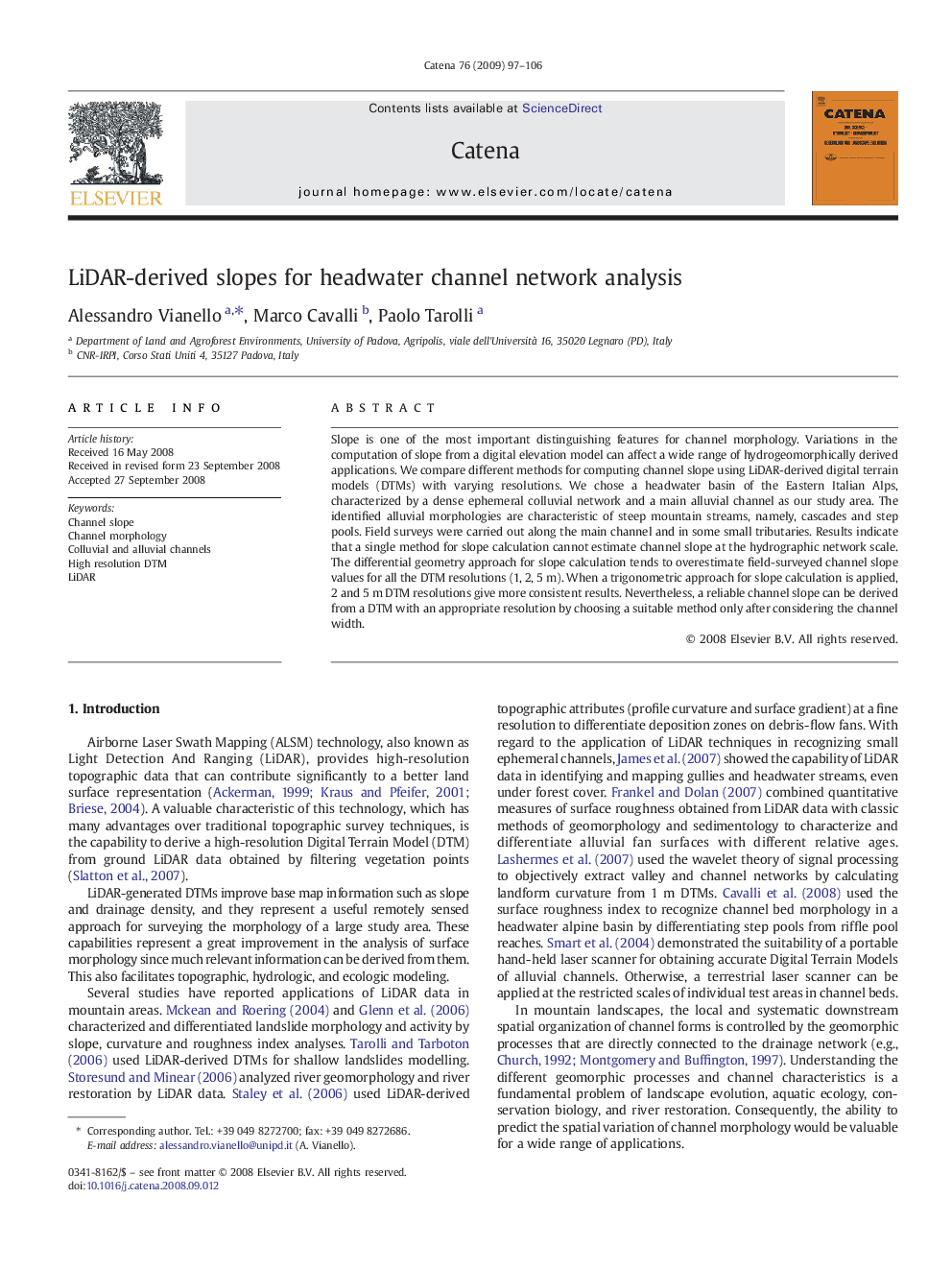| Article ID | Journal | Published Year | Pages | File Type |
|---|---|---|---|---|
| 4572326 | CATENA | 2009 | 10 Pages |
Slope is one of the most important distinguishing features for channel morphology. Variations in the computation of slope from a digital elevation model can affect a wide range of hydrogeomorphically derived applications. We compare different methods for computing channel slope using LiDAR-derived digital terrain models (DTMs) with varying resolutions. We chose a headwater basin of the Eastern Italian Alps, characterized by a dense ephemeral colluvial network and a main alluvial channel as our study area. The identified alluvial morphologies are characteristic of steep mountain streams, namely, cascades and step pools. Field surveys were carried out along the main channel and in some small tributaries. Results indicate that a single method for slope calculation cannot estimate channel slope at the hydrographic network scale. The differential geometry approach for slope calculation tends to overestimate field-surveyed channel slope values for all the DTM resolutions (1, 2, 5 m). When a trigonometric approach for slope calculation is applied, 2 and 5 m DTM resolutions give more consistent results. Nevertheless, a reliable channel slope can be derived from a DTM with an appropriate resolution by choosing a suitable method only after considering the channel width.
